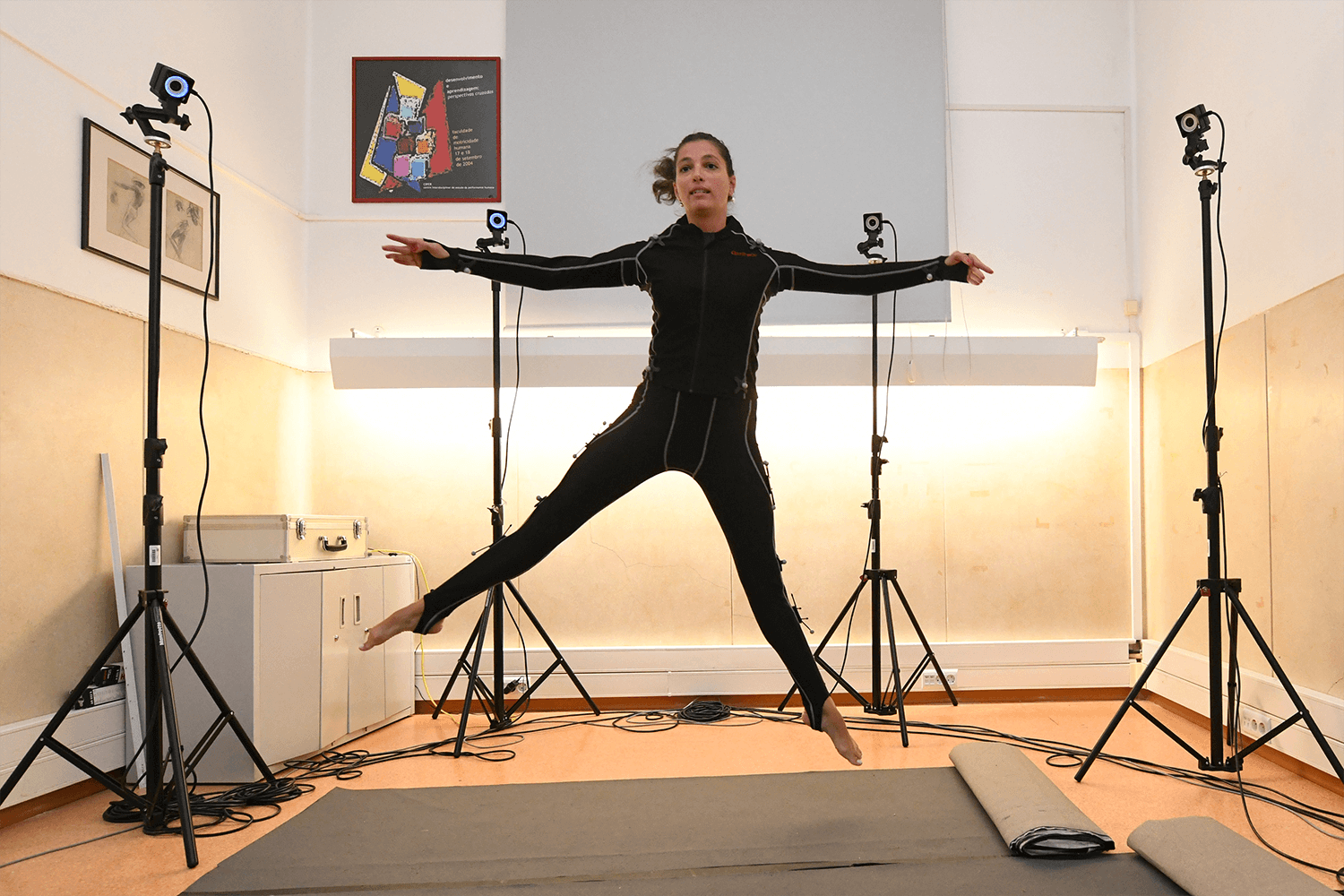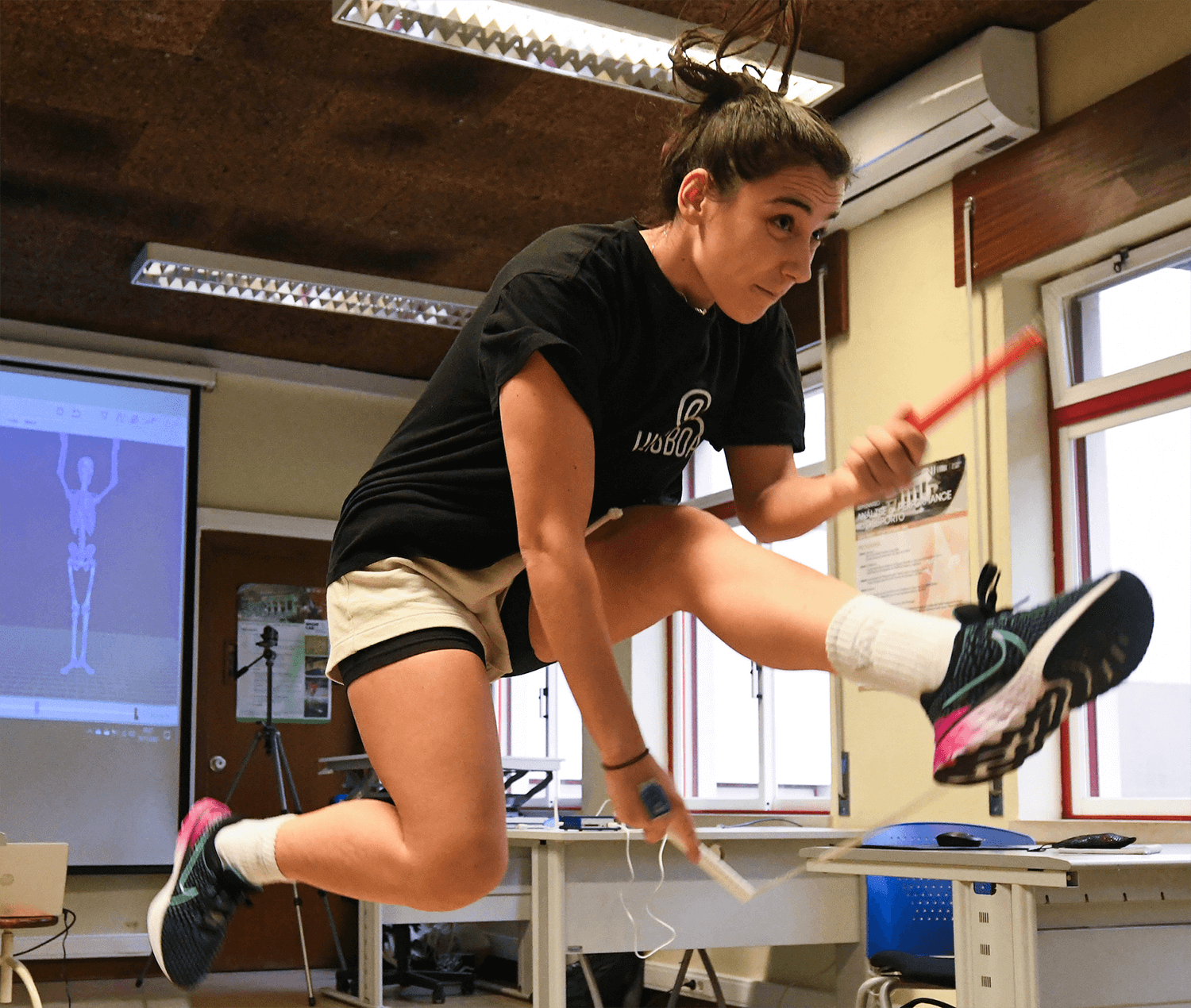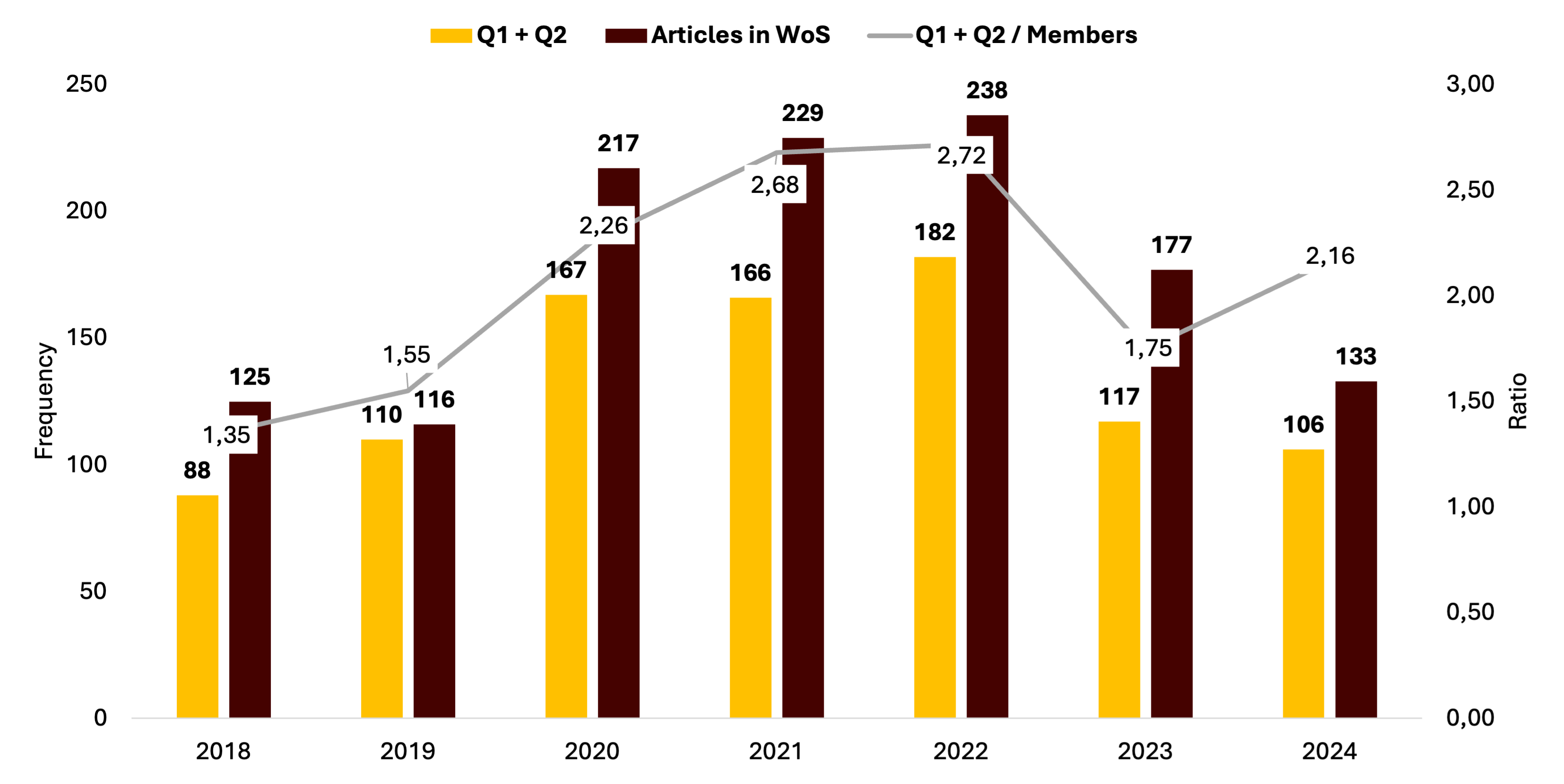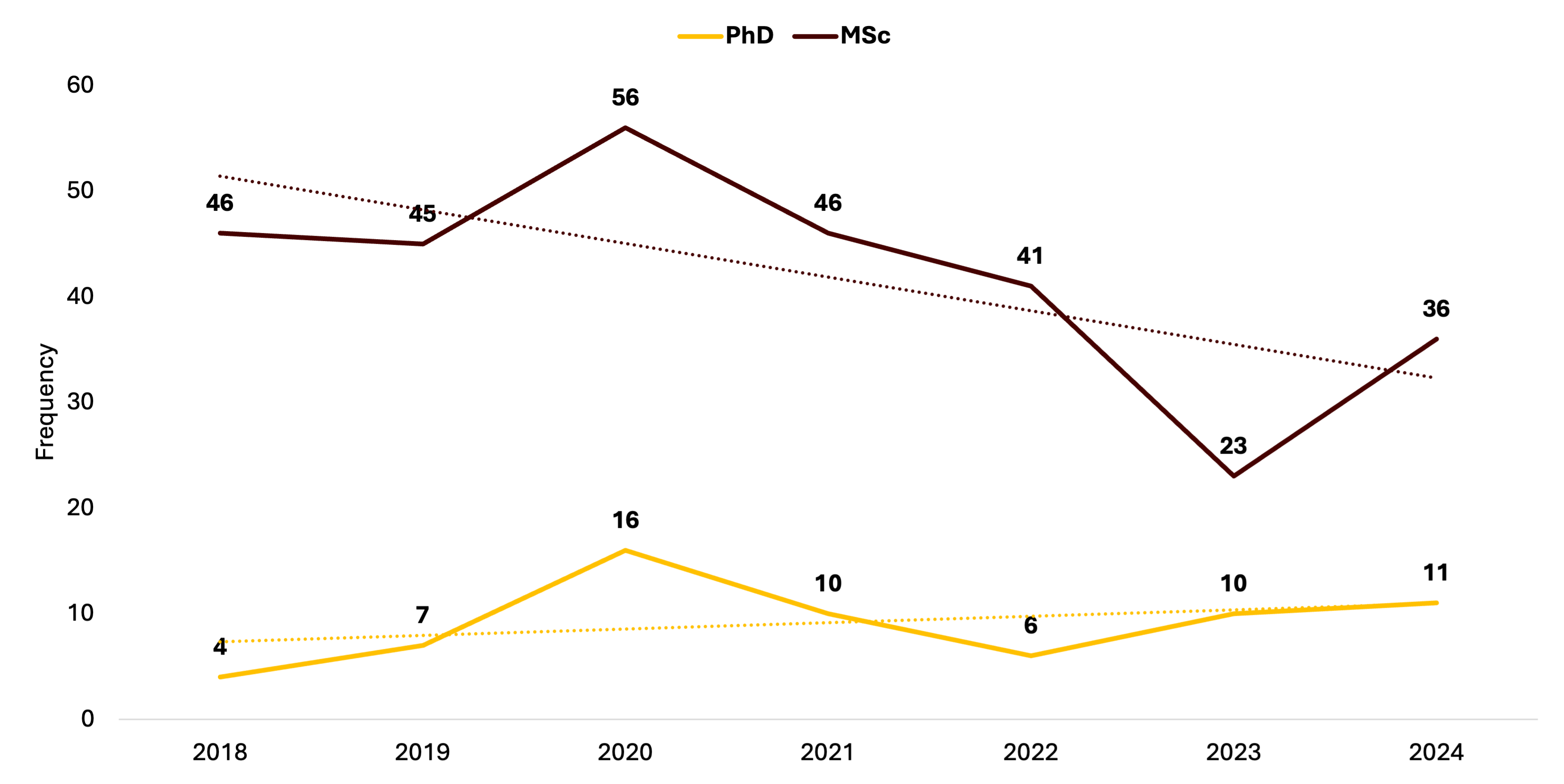About CIPER
Programatic Plan
Movement is fundamental to human functioning and is integral to leading a healthy life. CIPER's primary focus is on human kinetics, also known as kinesiology or human movement science (motricidade humana in Portuguese). This field encompasses diverse biophysical and social scientific disciplines examining human movement and its influences in various contexts like work, sports, exercise, and rehabilitation settings. Recent technological advancements have revolutionized the study of human movement, allowing for the collection of high-resolution spatiotemporal movement data through tools such as miniaturized sensors, smartphones, local positioning systems, and light-level geolocators. These innovations, including advanced methods for assessing total energy expenditure during daily activities, have resulted in substantial enhancements in data management, processing, and analytical techniques. Moreover, the exponential increase in computational power has fuelled an ecoinformatics revolution, enabling computations previously unfeasible on desktop computers. Internet networking has further facilitated access to vast databases, enhancing research capabilities in studying human movement. These breakthroughs have significantly enhanced our ability to address fundamental questions about human movement, including why people move, how they move, when and where they move, and the consequences of movement in terms of learning and development. Addressing these questions requires interdisciplinary collaboration among sub-scientific disciplines within human movement science, such as sport and exercise psychology, biomechanics, exercise physiology, and motor learning. The intersections between these sub-disciplines form the basis of what CIPER designates as the Human Kinetics framework. This framework provides a structured approach to addressing the complex and multifaceted aspects of human movement, facilitating interdisciplinary research and innovation in the field.
The World Health Organization has emphasized the importance of understanding how an individual's health status influences their daily life. This entails capturing the lived experience of health, integrating biological health—pertaining to bodily functions and structures that define organismic health capacity—with lived health, which encompasses an individual's actual performance of activities in their environment. This concept, articulated in the International Classification of Functioning, Disability and Health, introduces human functioning as the third indicator of health, alongside morbidity and mortality. Recognizing functioning as a bridge connecting health to individual well-being and societal welfare underscores its significance in promoting health and achieving the United Nations Sustainable Development Goal #3 of ensuring healthy lives and well-being for all ages. While indicators of functioning have long been utilized in health outcome measures, they often fail to fully capture its complexity. Functioning is not merely an outcome of health but rather a concept intrinsically tied to healthy life, encompassing the contextualized lived experiences of individuals and societies. Given the rising prevalence of non-communicable diseases and chronic health conditions, there is an urgent need to prioritize functioning in everyday life and in societal systems. Prioritizing functioning and performance in addressing health can yield significant benefits across various domains including practices, research, education, and policy. The interdisciplinary nature of human functioning integrates inputs and methods from diverse disciplines, offering a more comprehensive understanding of human health, particularly focusing on the performance of daily activities, even in demanding settings such as sport. The Human Kinetics framework serves as a powerful tool for delving into the mechanisms and patterns of movement, enabling a deep understanding of the repercussions of movement for individuals, communities, and populations over time.
Compelling data support the social, economic, and health benefits of sport and physical activity (PA), particularly in fostering positive youth development and enhancing the quality of life for adults and elderly. However, the extent to which these benefits can be generalized without considering the context of people’s daily activities remains uncertain, as exemplified by the widespread sedentarism. Our strategic research program main goal is ‘promoting human functioning through sport and physical activity across the lifespan’. It focuses on:
- Continuing to Generate New Knowledge with International Impact: We aim to produce cutting-edge research on human functionality. Emphasis will be placed on developing valid measures, conducting experimental observations and interventions, constructing models, and refining algorithms to understand how PA and sport behaviours influence functioning across the lifespan.
- Translate Research Outcomes: We seek to translate our research findings into actionable health policies and practices for PA and sport, employing tailored approaches for individuals and communities. By bridging the gap between research and implementation, we aim to maximize the real-world impact of our findings, ultimately promoting healthier, functioning lifestyles.
- Empower Interdisciplinary Research from the Outset of the Research Career: Our program is dedicated to fostering interdisciplinary research resources and cultivating advanced research capacities among young and mid-career investigators. By nurturing collaboration across diverse fields and expertise, we aim to drive innovation and push the boundaries of knowledge in the realm of human kinetics.
The research plan will be conducted across key life stages (children, adolescents, adults, elderly) and transitions, addressing key aspects of human movement (e.g., motor skills, morphological and functional adaptability, cognitive and physical performance, psychological self-regulation, bio-psycho-motor development) and across population settings and health conditions, based on four main pillars:
- Data Validity: Methods to measure PA, sport, and related movement variables have advanced rapidly. To progress beyond the state-of-the-art, we propose developing new advanced methods for integrating multiple reliable measures and creating new variables to measure situated movement ecologically and precisely.
- Observations: Our research aims to capture goal-directed movement according to task environment and understand its facilitators and inhibitors. Through in situ measurements and experimental studies, we will understand the mechanisms that direct PA and sport behaviours to functioning health, including performance achievement in settings such as sport or military. We will identify pathways of PA and sport behaviours, along with relevant mediators and moderators for targeted interventions with potential long-term functioning benefits.
- Modelling and Algorithm Selection: We will provide unique perspectives on different levels of analysis through complex modelling and algorithm selection to better understand functions, integrate measurements, and inform interventions. To achieve this, artificial intelligence tools play a central role, as demonstrated by our international endeavours. Additionally, we will innovate in applied function modelling by developing interactive tools informed by stakeholders' perspectives. These tools will integrate monitoring, personalized reporting, educational resources, and support networks to enhance effectiveness and usability.
- Interventions: The next critical step is to design and implement interventions tailored to different population groups and contexts, aiming to improve functioning through modifications in physical activity and sport behaviours. Identifying feasible and effective approaches will enable the translation of evidence-based interventions into everyday life.
The development of our program will entail further investment in interdisciplinary research resources and international collaboration, while also enhancing advanced research capacity across six central areas of scientific training:
- Building expertise in advanced human movement measurement, particularly through the integration of diverse metrics.
- Building expertise in intervention development and implementation, focusing on designing task constraints to accommodate environmental and individual features.
- Fostering research leadership by empowering younger researchers to lead projects and initiatives.
- Providing grantsmanship training, guided by senior researchers and scientific advisors, to enhance funding acquisition capabilities.
- Developing advanced skills in communicating and disseminating scientific information effectively to various audiences.
- Developing PhD programs guided by the Human Kinetics framework and informed by ongoing research at CIPER, reinforcing the existing program in Lisbon and establishing a new program in Coimbra.
Our vision entails a significant paradigm shift in recognizing human movement as a pivotal factor for functioning throughout life and across diverse contexts. We aspire to disseminate novel insights into community-based practices, thereby influencing policies and programs aimed at enhancing functionality through physical activity and sport. Central to our approach is the integration of interdisciplinary perspectives, blending biomechanics, physiology, psychology, and motor learning, to address gaps in knowledge and providing innovative training resources for practical application. In conclusion, our implementation process is based in ground-breaking science and supported by interdisciplinary collaboration and innovative methodologies. It holds the potential to develop new interventions and provide evidence-based guidance for recommendations aimed at improving functioning and well-being through sport and physical activity.
Basic Plan
Questions of human movement are central to various scientific disciplines (Abernethy et al, 2015) that encompass alternative research paradigms for studying movement. To foster integration and interdisciplinarity, CIPER´s basic is based on the human kinetics framework (Figure 1), i.e., how key disciplines can focus and contribute to the understanding and explanation of human movement. These disciplines contribute as components for the study of human kinetics, such as: Biomechanics (physical motion), exercise physiology (biological processes) and sport and exercise psychology (behavioral experience). Consequently, the performance of the movement paths resulting from dynamic interplay of the three basic components, forms the fourth component – motor control and learning. Next, we describe these four components that constitute the human kinetics framework.
Biomechanics is the application of mechanics to the study of living systems. An individual’s motion capacity accounts for its ability to move in various ways or modes, reflecting its abilities to perform self-propelled locomotion or externally vectored transport (e.g., surfing or skiing). Biomechanics scientists perform quantitative analyses of movement in the healthy state and to examine how musculoskeletal changes introduced by injury, training, growth and maturation, and ageing affect motor performance. The focus is at the body activity level, although many biomechanists also work at the cellular and molecular levels, attempting to understand the mechanics of molecules and how they apply to the morphology and motility of cells. Studies springing from this paradigm often use controlled experiments in which the movement environment is changed, while monitoring the individual’s motion and force production. This approach describes of the motion capacity of individuals but neglect the questions of where and when individuals move, as well as their metabolic energy production and personal experiences.
Sport and exercise psychology is the scientific study of human behaviour and mental process in the context of sport and exercise. There are two major questions that sport and exercise psychology scientists address:
- What effect does participation in physical activity have on the psychological processes of the participant?;
- What effect do psychological factors have on physical activity participation and performance?
The mechanistic investigation of movement in this approach goes to the level of neurophysiological processes that are associated with particular movement or displacement choices. In general, this approach pays less attention to how individuals implement choices (motion capacity), and more attention to the psychological state of the person who moves, to fulfill one or more goals. The relative importance of different goals is expected to vary over a person’s lifetime and over much shorter periods, and an individual may pursue several goals simultaneously.
Exercise biology focuses on both acute (immediate) body responses to exercise and chronic (long-term) adaptations to physical activity. Such physical activity tends to be qualified and quantified according to the contexts where it is expressed, i.e., where and when the individual can move (e.g., indoor or outdoor physical activity, in altitude or at the see level). It can be studied from the whole-body level to the subcellular level. At the whole-body level, the exercise physiologist might ask whether a lifetime of exercise can increase life span. At the organismic system level, exercise physiology aims at understanding the effects of regular exercise on, for instance, the cardiovascular system. Understanding the effects of exercise on the pattern of adipose tissue distribution and the implications for the prevention of obesity represents work at the tissue level. At the cellular and subcellular levels, the exercise physiologist may study the mechanisms responsible for muscular hypertrophy following strength training. This approach explores the relative efficacy of some particular fitness currency (e.g., energy gain, or survival). Consequently, it does not explicitly deal with motion per se and tend to neglect the constraints imposed by the intentional and lived experiences of individuals and the information they use from their environments.
Motor control and learning is concerned with understanding the processes that are responsible for the acquisition, performance, and retention of motor skills throughout the life span, which occur with growth, development, maturation, and ageing. It also deals with motor control changes that occur because of practice (or adaptation), focusing on how motor skills are learned and the changes in performance, retention, and control mechanisms that accompany skill acquisition. Motor skills are goal-directed actions that require movement of the whole body, limb, or muscle in order to be successfully performed. It can be movements as simple as unidirectional finger or eye movements to movements as complex as those involved in fundamental actions such as walking, running, reaching, grasping, driving and speaking; and in sporting tasks such as performing a complex gymnastics routine or hitting a fast-moving tennis ball. Despite their obvious diversity, all the motor skills used in these tasks share their purposefulness, their dependence on learning, and the fact that the quality of task goal achievement is directly dependent on the quality of the movement produced.
Figure 1. Human kinetics framework, composed of three basic components related to the moving person, which are studied by biomechanics, exercise biology, and sport and exercise psychology, and the processes by which these three basic components affect each other in the movement path and its development over time, which is studied by motor control and learning.
The described human kinetics framework (Figure 1) can provide a theoretical scaffold to synergize research from the paradigms of these components. It may also motivate the development of new interdisciplinary concepts and methodologies. It explicitly integrates the basic components and processes involved in human movement.
Four basic questions illustrate its methodological approach to understanding movement:
- First, why move (intentions and causes)?;
- Second, how is this movement performed (motion capacity)?;
- Third, when and toward what target is this movement performed (navigation capacity)?;
- Fourth, how do all components interact to produce the movement path and its learning and development?
By answering these questions, we strive to identify the key life course patterns and behaviors determining movement. It is also important to realize that both the momentary as well as the lifespan experiences of movement contribute to the generation of movement paths. Thus, instead of focusing only on the short-term response of the organism to its environment, one can extend the proposed framework to address questions on the causes and consequences of movement across the life span.
Methodologically, scientific observations imply collecting data from reality, about the movement phenomenon under analysis. This means that performing an observation implies a particular way of collecting data from reality. How
researchers collect data imply a theoretical view, related measurement tools, and procedures to guarantee the quality of the data. Moreover, evidence-based interventions operationalize the scientific models obtained from observations.
Figure 2. A linear arrangement of the several levels of analysis, with direct bidirectional links between levels, relating reality, explanations and predictions, and interventions in the phenomenon of interest.
Traditionally in human movement science, between function and observation, there is an intermediate step consisting of mathematical models of biophysical entities and their interactions - cells, tissues, organismic systems, body segments, or movement paths. A model is meant to organize, by principles, known features of observations, which, in turn, allow simulated experimentation and prediction, and offer insight into what is being modelled. In short, models aim to explain functions. Research on function, however, is distinct from research on how this function can be achieved. Generating, comparing and modifying the ways in which a function is performed is the algorithmic level of analysis. Such an algorithmic description can then be related to the model. Observations can sometimes appear to be directly related to an algorithm, without going through a model. Algorithms, however, do not contain biophysically interpretable quantities. Relating biophysical and algorithmic quantities relies first on a model of the experimental data. Importantly, connecting the language of mathematics to observations helps discern algorithmic elements and infer function. Algorithms seeking a bridge to data can then rely on mathematical models of observations. An algorithm can thus be approximated by processes with bio-physical constraints, constraints inherited from a particular mathematical model. This leads to the need of researching at different levels of analysis for relating reality, explanations and predictions, and interventions (Figure 2), as it happens at CIPER.
Moreover, today much effort is focused on theoretical analysis of data itself (e.g., studying existing data bases), without involving models, algorithms or functions related to movement itself. Formally including data in Figure 2 is essential to see the different levels of analysis as providing constraints to each other. For example, observations clearly constrain the quality of data obtained from reality. But it is equally important to consider that the research into functions, algorithms and models influence the type of experiments sought and performed as well as guide the choice for data analyses.
Rather than a physical scale (e.g., micro- to macroscopic), these levels of analysis (Figure 2) can be used for research within a subdiscipline (e.g., biomechanics) or, preferably, across subdisciplines, connecting human movement science subdisciplines, for interdisciplinary research. Interdisciplinary science relies on collaborations. This is a key goal for CIPER for the next years, where existing and new graduate programs can train future scientists at the intersection among traditional subdisciplines, based on preferred levels of analysis.
CIPER numbers 2024
Shortlisted for Sports Paper off the Year 2023 - selection early 2025 for the work "Training and Life Stress in ITU World Olympic Distance Age-Group Championship Triathletes"
Additional Info
- Author Vleck, V.
- Year 2024
- Text Shortlisted for Sports Paper off the Year 2023 - selection early 2025 for the work "Training and Life Stress in ITU World Olympic Distance Age-Group Championship Triathletes"
- Awarded by MDPI
Honorable Mention in History and Sociology of Sport at the COP-REPSOL Sports Science Awards 2023/2024
Additional Info
- Author Cordovil, R.
- Year 2024
- Text Honorable Mention in History and Sociology of Sport at the COP-REPSOL Sports Science Awards 2023/2024, with the work “Learning to Cycle: A Cross-Cultural and Cross-Generational Comparison”
- Awarded by Comité Olímpico de Portugal
3 Minute Thesis Finalist
Additional Info
- Author Brito, H.
- Year 2024
- Text 3 Minute Thesis Finalist
- Awarded by Universidade de Lisboa
Young Researcher Award - António Paula Brito
Additional Info
- Author: Araújo, D.
- Year: 2024
- Text: Young Researcher Award - António Paula Brito, attributed to Henrique Lopes for the presentation "O papel da perceção-ação e das affordances para a tomada de decisão no judo", at the XXV Jornadas da Sociedade Portuguesa de Psicologia do Desporto
- Awarded by: Sociedade Portuguesa de Psicologia do Desporto
Former President and Honorary Member
Additional Info
- Author: Araújo, D.
- Year: 2024
- Text: Former President and Honorary Member
- Awarded by: Sociedade Portuguesa de Psicologia do Desporto
Lifetime Achievement Award in Movement & Skill Acquisition
Additional Info
- Author: Araújo, D.
- Year: 2024
- Text: Lifetime Achievement Award in Movement & Skill Acquisition attributed by EMERGENCE
2025-2029 Plan
More...
Scientific production report 2024
Reports, Numbers & Awards
Texto de Apresentação

CIPER's activity plan, "Promoting Human Functioning through Physical Activity and Sport During the Life-Course," aligns with WHO's concept of human functioning, integrating biological and lived health comprehensively. Human kinetics, CIPER’s research focus, explores human movement's role in health, employing an interdisciplinary and technological approach for innovative insights.

Access the institutional page of Stuart Biddle here.
Additional Info
- Email: This email address is being protected from spambots. You need JavaScript enabled to view it.









